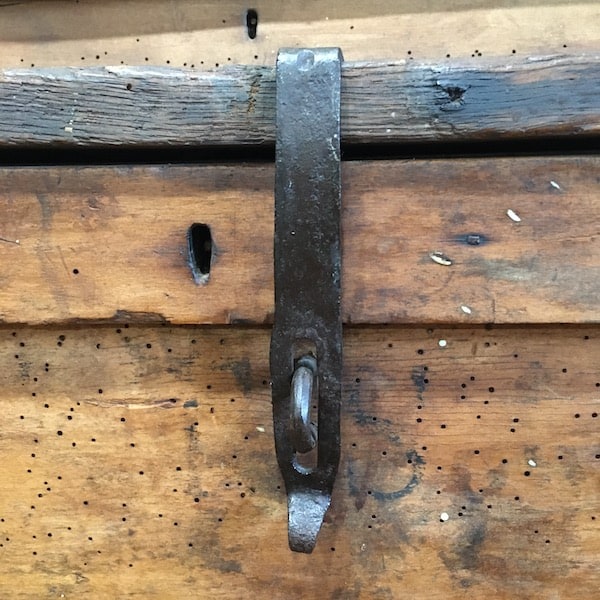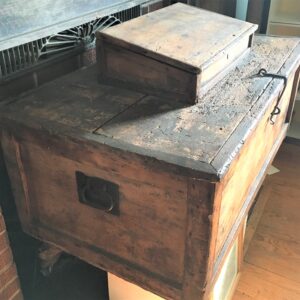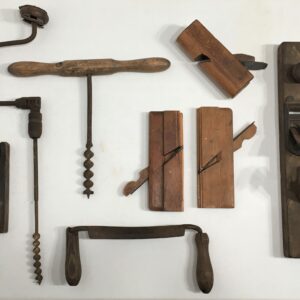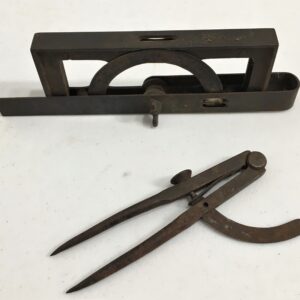View Collections | Browse Cultural Objects | Browse Oral History
Cultural Objects, Tools
Sowers Tool Chest
People
Associated Person: William Taylor SowersDate
1880-1920Places
Floyd (Courthouse District)Material/Medium
Chestnut
Specifications
- Length: 41 inches
- Width: 22 1/4 inches
- Height: 16 1/2 inches
Description
This wooden chest has a smaller wooden box attached to its lid. Both lids are hinged and lift up for access to the tools. The smaller one ( 20 x 12 x 5 1/2 inches) has a keyhole and slanted top (front height is 3 1/4 inches) and possibly could have served as a writing desk. The main compartment has a hasp that would accommodate a padlock. A removable wooden tray (19 1/2 x 6 1/2 x 3 1/4 inches) fits in the upper left part of the chest’s interior creating a hidden storage space underneath. Wooden hooks on the back interior wall would have held long-handled tools. A larger tray may have once been part of the chest as boards have been added to make a ledge.
Keywords
Tool chest, carpentry tools, planes, moldingsBio Sketch
William Taylor Sowers (1847-1930) was listed as a carpenter in both the 1880 and 1900 U.S. Censuses and as a farmer in other decades. He was the son of William E. and Nancy Sowers and husband of Rosabell Ann Gardner (d/o Alexander and Elizabeth Sowers Gardner). His older brother Darius was also a carpenter. Darius’ son William A. Sowers was editor of the Floyd Press from 1900 to 1935.
Notes
Of the buildings William T. Sowers worked on as carpenter’s foreman, the 1913-1914 Georgian Revival home of Nannie Harman Howard ranks as one of the most impressive. Lather Hylton drew up the plans and served as contractor; his crew reused brick and other materials salvaged from Aspen Hall, childhood home of Rear Admiral Robley D. Evans, which stood on the same site. William Sowers is credited with the interior moldings and woodwork. Three of the home’s six fireplace mantels were carved from local soapstone.






